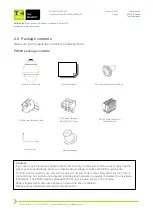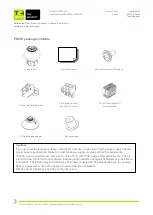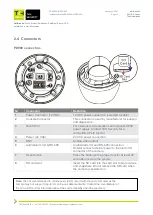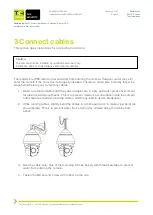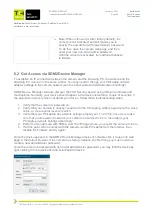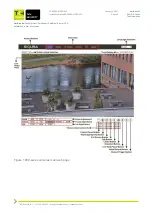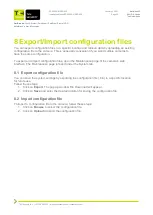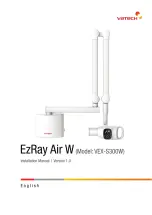
Our Brands:
FlinQ | iProtect | Park Assist | ParkEyes | Siqura | VDG
Installations in over 80 countries
TKH Security B.V. | +31 182 592 333 | [email protected] | tkhsecurity.com
Meridiaan 32
2801 DA, Gouda
The Netherlands
PD900/PD910/PD920
January 4, 2021
Installation ManualPD900/PD910/PD920
Page 20
3.4 Surge protection
Protection against lightning strikes (direct and indirect)
Additional protection against direct or indirect lightning strikes is required according the IEC 62305
series standards, or equivalent standards. Consideration shall be given to the following:
•
The use of properly earthed air-termination rods for pole mounted or high mounted cameras
(see illustration on the right)
•
Avoid wiring loops
•
Locate protection devices close to the protected equipment (within 1m)
•
Keep wiring to protection devices short.
Ethernet port surge protection
Outdoor Ethernet wiring with or without PoE needs additional surge protection at
both ends:
•
Close to the camera, to protect the camera and close to the Ethernet switch
or PoE injector, at the building entry.
•
An external surge protector with isolation transformer in the signal lines, like
AETEK SD-101 or SD-201 is recommended.
Note: Surge protectors with gas-discharge tubes (GDTs) only shall be
avoided (*).
•
Make sure the surge protector is properly grounded
•
Make sure the camera housing is properly grounded
Prevent ground loops.
•
Shielded Ethernet cable is preferred
•
The AETEK I69-200 or I69-200-V2 UPoE injector has built in surge protection
up to 12kV, so in this case surge additional protection is only required at the
camera side.
PoE injectors for PD900/PD910/PD920 shall support following:
- PoE+ 802.3at class 4 for PD900
- UPoE with PoE Handshaking for PD910/PD920
- PoE++ 802.3bt type 3 class 6 for PD950/PD980
(*) This is because of the fact that GDTs do not trigger at the same time. A differential surge voltage
with a very fast rise time is created by the GDT being triggered one after another. The surge can
cause current to flow into port on one conductor in the cable and back out of the port on another
conductor in the same cable. Through Ethernet transformer coupling, this will induce a surge on the
secondary side of the transformer, potentially damaging the Ethernet transceiver chip (often on the
surveillance camera). More information, please refer to
(https://incompliancemag.com/article/designing-ethernet-cable-ports-to-withstand-lightning-surges/).



